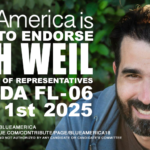More than a week after we learned about John Eastman's legal memo advising then-President Trump on how he could overturn Joe Biden's victory, The New York Times has published a story about Eastman. He's described as a "fringe" figure.
John Eastman’s path from little-known academic to one of the most influential voices in Donald J. Trump’s ear in the final days of his presidency began in mid-2019 on Mr. Trump’s favorite platform: television.
Mr. Trump, who had never met Mr. Eastman, saw him on the Fox News talk show of the far-right commentator Mark Levin railing against the Russia investigation. Within two months, Mr. Eastman was sitting in the Oval Office for an hourlong meeting.
Soon, Mr. Eastman was meeting face to face at Mr. Trump’s urging with the attorney general, William P. Barr, and telling him how Mr. Trump could unilaterally impose limits on birthright citizenship.
Then, after the November election, Mr. Eastman wrote the memo for which he is now best known, laying out steps that Vice President Mike Pence could take to keep Mr. Trump in power...
Mr. Eastman’s rise within Mr. Trump’s inner circle in the chaotic final weeks of his administration ... underscores the degree to which Mr. Trump not only relied on, but encouraged, a crew of players from the fringes of politics.
So he was from "the fringes of politicis," according to Michael Schmidt and Maggie Haberman of the Times. Schmidt and Haberman acknowledge that Eastman had some standing in the right-wing legal world.
Like many of the lawyers who worked in Mr. Trump’s administration, Mr. Eastman had strong conservative legal credentials....
Mr. Eastman attended law school at the University of Chicago and clerked for both Justice Clarence Thomas of the Supreme Court and Judge J. Michael Luttig, a former federal appeals court judge who President George W. Bush considered for the Supreme Court. He is a member of the conservative Federalist Society and a former dean of the law school at Chapman University in Orange County, Calif.
He was also chairman of the board of the National Organization for Marriage, one of the most prominent groups opposed to same-sex marriage before it was legalized nationwide. He chaired the Federalist Society’s Federalism and Separation of Powers Practice Group. He's a senior fellow of the Claremont Institute and the founding director of Claremont's Center for Constitutional Jurisprudence.
And if he was "little known" outside right-wing legal circles, he was nevertheless known to The New York Times itself. The opinion section of the Times published Eastman at least three times.
The current story depicts Eastman in the Oval Office telling Attorney General Barr "how Mr. Trump could unilaterally impose limits on birthright citizenship." I assume Eastman was repeating what he wrote in a "Room for Debate" piece for the Times titled "Birthright Citizenship Is Not Actually in the Constitution."
The question of whether birthright citizenship should be abolished is based on the faulty premise that our Constitution actually mandates it. In fact, the text of the 14th Amendment’s citizenship clause reads: “All persons born or naturalized in the United States and subject to the jurisdiction thereof, are citizens of the United States and of the State wherein they reside.”
That text has two requirements for citizenship — that an individual is born on U.S. soil; and that an individual is subject to the jurisdiction of the United States when born.
“Subject to the jurisdiction” means more than simply being present in the United States. When the 14th Amendment was being debated in the Senate, Senator Lyman Trumbull, a key figure in its drafting and adoption, stated that “subject to the jurisdiction” of the United States meant not “owing allegiance to anybody else.”
This is not as inflammatory as a subsequent Eastman opinion piece, not published by the Times, arguing that Kamala Harris might not be a natural-born citizen because her immigrant parents were not citizens when she was born. But it's inflammatory.
The Times also published an Eastman defense of a harsh Arizona immigration law, as well as a piece contrasting the treatment of a Colorado teacher, Jay Bennish, who denounced then-president George W. Bush, capitalism, and U.S. foreign policy in his classroom, and the treatment of a New Jersey Transit worker, Derek Fenton, who burned pages of the Quran during a protest of a proposed Islamic cultural center in lower Manhattan that was described by right-wing Islamophobes as the "Ground Zero mosque." Eastman argued that government employers shouldn't be permitted to treat inflammatory off-site speech the same way they treat inflammatory speech at the workplace:
The government may restrict employees’ speech only if the restriction is “necessary for their employers to operate efficiently and effectively.” That test seems to have been much more clearly met in the Bennish case than in Fenton’s case. Bennish was speaking while on duty, in violation of curricular policies, to a captive audience of students. His speech, which was unrelated to his geography course, not only had the potential but actually did interfere with the government’s operations.
Fenton, on the other hand, was off duty, not in uniform, exercising his right as a citizen to peacefully protest about a matter of significant public concern.
That's a valid point. But Eastman couldn't stop there.
(Accusations that have appeared on blogs that he was a “hate-filled fanatic” engaged in an act that “was an extreme display of fervor” are grossly exaggerated. Nothing of the sort appears on the video that depicts the brief incident).
Derek Fenton burned pages of the Quran. He did so at a time when anti-Muslim sentiments were widespread. But I guess he didn't do it in a hate-filled way!
Eastman is, The New York Times tells us, a "fringe" figure. But he hasn't been too fringe-y for the Times.
Published with permission from No More Mister Nice Blog.


















